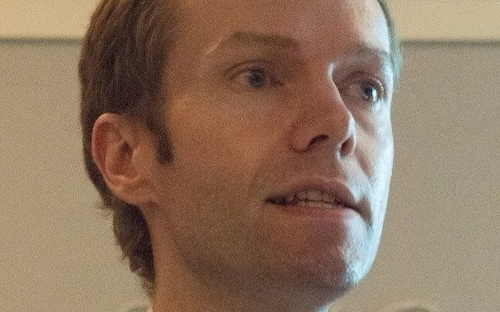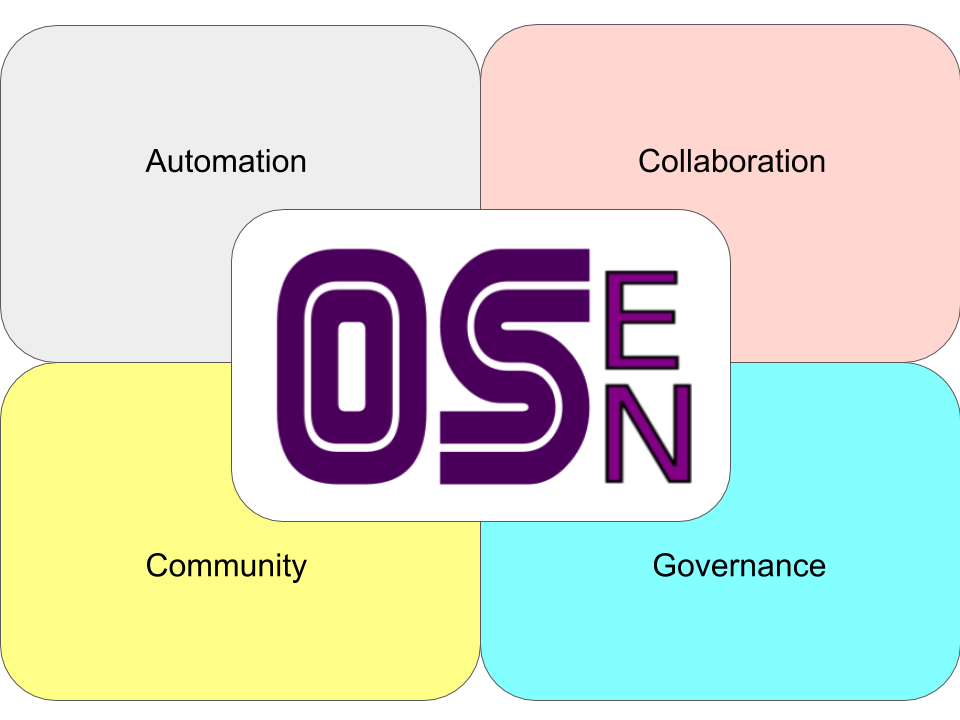1985: Rural Northeastern Arkansas
When I was 12, I had an… well, I don’t know quite what to call it, but I think of it as an existential crisis. It started as an overwhelming sense of dread whenever we would drive in to our place of work. We ran a crafts business, and I was one of the employees – me, my older brother (17), and our parents. It was just us. We had moved to my mother’s small, rural hometown in northeast Arkansas to launch a business and capitalize on her family’s help in the form of free or cheap housing and office space, not to mention sweat equity partners like my aunt and uncle.
Anyway, every morning we would make the short drive to the shop, and every morning I would feel a sense of overwhelming dread. A sense of neverending doom and dispair that this is it. This is my life. It’s never going to evolve from this into something better. Such was my mental state that when I somehow heard about Descartes’ “I think, therefore I am” in response to the philosophical question of whether or not we are real or merely living in someone else’s dream, my brain went absolutely wild. I went from an overwhelming sense of gloom to a full-on panic. Every day, I would question whether my world was real or imagined by someone else, and every day I would come to the unsettling conclusion that I didn’t know. An uneasy feeling settled in the pit of my stomach, and it wouldn’t budge. It was at this point that I started to wonder, “Is this what it feels like to go insane?” Cue another panic attack, but now, instead of thinking about the uncertainty of existence, I was dogged by the uncertainty of my sanity. Naturally, I dealth with these issues by… never telling anyone.
At some point, after some months of mental anguish, I decided that if this is a dream, then I may as well make it a good dream and have fun with it. And that’s how I came to the conclusion that I wasn’t crazy. No crazy person could make such a logical deduction! Looking back, I like to think that it couldn’t have been that bad if I came up with a way to cope with it. But there’s a reason why that particular time period was scary for us and why it led to the summer of panic in 1985 – and also explains why this blog/newsletter is called “son of a preacher man”. 1984-1985 was a period of great uncertainty for us, much of it self-inflicted by my parents, and specifically my father.
Flashback: Southwestern Missouri and the Ministry
Before launching our business, we were a church-leading family in the Southern Baptist denomination. We were “in the ministry”, and my father had been a music leader, youth pastor, and associate pastor in Northwestern Arkansas, and then became a head pastor in 1980 in Southwestern Missouri. After being voted out of his first church after his first year (I’ll come back to this episode in a future installment) he and his followers decided they were going to start a new church, Victory Baptist Church. My father developed some rather strident views: The Southern Baptist Convention was “too liberal” and was insufficiently unkind to those in queer communities. He also was not fond of recent trends to ordain women. He was extremely bigoted against blacks and immigrants, as was our mother. As with most southern moms, she held the same views but was highly skilled in hiding it with a veneer of niceness and civility. They would never admit it, but they were functionally segregationists.
Victory Baptist was where we were free to be us, shedding the official ties to the “liberal” SBC and putting all of our fundamentalist beliefs out in the open: scientific evidence of creation theory, avoiding the path to damnation paved with the gay agenda, abortion is murder, and the end times and the rapture were just around the corner. The rapture scared the shit out of me. I lived much of my childhood convinced that at any given moment, my mom would disappear and I would be left behind. Cue a number of moments where I would desparately try to find my mother out of fear that she had been taken away. Underneath that anxiety was the dual fear that I had been left behind because I didn’t pass muster as a Christian. So we created a small school to avoid the herecy rampant in our government schools and teach our kids the values of homophobic, racist, fundamentalist Christianity.
Over time, my father grew increasingly frustrated with this ambitious project. I’ve honestly never quite understood why. From a career perspective, he probably felt that he could never achieve greatness as a politico-spiritual leader. One of the themes I’ll return to in this blog is my father’s narcissism – and my grandmother’s. But there was also undiagnosed mental illness and severe bouts with depression. He certainly didn’t have any changes in belief – his core beliefs are the same now, several decades on. Whatever the reason(s), by the summer of 1984, he was done, and he quit, throwing the family into chaos. We were unable to make mortgage payments, and we lost our house by that fall. This precipitated one of the most unsettling incidents I’ve ever witnessed. While we were moving out of our foreclosed house, my father suffered what I believe was a nervous breakdown and blacked out over a period of several hours. He started acting weirdly, eg. while loading a moving truck, placing furniture in a position on the edge where it would certainly fall off onto the road. When someone pointed this out, he shrugged it off and walked away. I’ll never forget walking into our house looking for my parents, and seeing my dad with his head buried in his hands. He kept repeating, “I can’t do it. I can’t do it” with my mom assuring him, “Yes, you can.” By this point, we had frantically begun to look for others to help us with the move move, and thankfully, they showed up to do the thankless job of making sure my dad didn’t place himself or others in harm’s way. When it came time to make the first delivery to our new rental home, a 30-mile drive on rural roads, they convinced him to get on the truck but would not let him drive – he was clearly too incapacitated to trust behind the wheel. He was characterized as “off” and not really present. At some point during this drive, he “work up” and wondered where he was. He had completely blacked out and had no recall of the preceding events.
What It All Means
It would be all too easy to look at these events and say, aha, that was some real trauma, and believe that this was the extent of it. But the fact is that our lives in the evangelical community prepped us for a lifetime of trauma and abuse. The irony is that the difficulties I outlined above are part and parcel of a lifetime spent moving from one traumatic moment to the next. The trauma of never knowing if you were good enough to get into heaven. The trauma of believing in a literal hell that awaits you if you don’t measure up. The trauma that stems from a continuous fear of being “left behind” by the better Christians. The trauma of believing we were heading into the “end times” and preparing for the 2nd coming of Christ. The trauma of living in a household with a Father who saw himself as the anointed head of household and head of the church, our “Christian flock”, coupled with the stress and paranoia that stemmed from all of the above. And then, ultimately, how it all fell apart when we could no longer maintain that veneer that we had strived for so long to present to the outside world.
I tell this story, because, while my personal crisis the following year pales in comparison to my father’s, it shows a direct link between a traumatic period of our family’s life and my inability as a child to process all of the prior trauma. This period of time, during my most formative years, had a profound effect on who I am today. As an adult, looking backwards, I often return to that traumatic time, haunted by its many ramifications: a brother who later came out as gay, whom I would describe as “psychologically broken” by my fundamentalist parents; a father and mother who never evolved emotionally, choosing to remain steadfast in their awfulness; and a strong desire to seek a replacement for the certainty of fundamentalist Christianity, as abusive as it was, which meant I have often been vulnerable to charismatic grifters with good storytelling skills.
In many ways, our family’s story of the past 40 years is America’s story of the past 40 years, especially evangelical Christian America. Abusive relationships with authoritarian Christian leaders, hateful bigotry, an ambition to purge America of its sinful waywardness, a desire for the freedom to dominate others that we deem to be lesser, and most of all, political striving – it’s all there in our family. I don’t think most Americans truly understand evangelicals and the dangers of their beliefs. In this blog series, I plan to peel back the layers that we wanted everyone to see and show the seedy underbelly of how this culture functions – or, rather, doesn’t. I will lay bare our unapologetic racism. I will expose our suspicion of democratic principles and our cavalier dismantling of them. And I will hopefully show that there is no compromise with those who sincerely believe that they are liberating America from Satan. But I’m not going to create boring academic lectures; I’m going to pull examples from our family’s history to *show* these principles in action, laying bare the subtext and speaking the unspoken. I continue to be disappointed with how most of our media cover the evangelical movement. I hope that by putting a human face on this movement, I can help others to understand this world more fully.
Also on: brid.gy Medium


